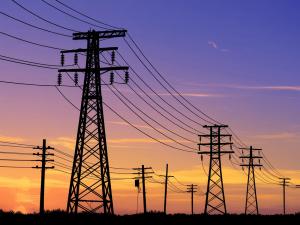Texas Electricity Rates 12% Below National Average Despite Rising Costs
Monthly electricity pricing data from utilities in every state. Their reports show how rates swing from 11.69¢ to 42.49¢ per kWh across the US.
The deregulated market pushes providers to offer better deals, creating competitive pressure that helps keep Texas electricity rates consistently below the national average.”
HOUSTON, TX, UNITED STATES, August 25, 2025 /EINPresswire.com/ -- Texas continues to maintain a competitive edge in electricity pricing, with average rates of 15.47¢ per kilowatt-hour (kWh), slightly below the national average of 16.22¢ per kWh. Monthly electricity bills for Texans average around $230, influenced by the state’s unique market structure and abundant energy resources.— Christian Linden
The Texas electricity market operates under a deregulated model, allowing consumers to select their electricity providers from a variety of options, fostering competition that helps keep rates lower. This market structure, combined with an abundant supply of natural gas and a growing wind energy sector, positions Texas as a frontrunner in affordable electricity costs.
According to the U.S. Energy Information Administration (EIA), Texas ranks 29th nationwide for residential electricity rates, maintaining its position despite a slight increase of 1.66% from the previous year. The EIA’s latest data reflects that residential electricity rates averaged 17.11¢ per kWh in March 2025, showcasing a year-over-year increase of 2.6%.
Understanding Electricity Costs
Electricity prices are determined by various factors, including the cost of power generation, transmission across the state’s grid, and state and local fees. For commercial users, Texas boasts significantly lower rates at 9.00¢ per kWh compared to the national average of 13.27¢ per kWh, translating to substantial savings for businesses operating in the state.
To effectively manage costs, Texans should consider their end-of-contract electricity strategy. This involves evaluating options before contracts expire to avoid being placed on higher variable rates. Understanding how to compare electricity plans in Texas is crucial for ensuring that consumers make informed decisions that align with their energy needs and budget.
Additionally, residents can further reduce their electric bills by investing in energy-efficient products. These products not only help lower monthly expenses but also contribute to a more sustainable energy future.
Factors Influencing Texas Electricity Rates
Several factors contribute to the comparatively low electricity rates in Texas:
Natural Gas Dependency: Over 40% of Texas's electricity is generated from natural gas, keeping costs down compared to states relying on more expensive fuel sources.
Deregulated Market: The ability of residents to choose their electricity providers promotes competition, leading to better rates and services for consumers.
Diverse Energy Resources: Texas is a leader in wind energy generation and is increasing its solar capacity, contributing to a diversified energy mix that stabilizes costs.
Regional Variations: Electricity rates can vary significantly within Texas due to local conditions, infrastructure quality, and proximity to energy resources.
Conclusion
As the electricity market in Texas continues to evolve, residents and businesses are encouraged to remain informed about their energy options. Understanding the factors that influence electricity costs can lead to more strategic decisions when selecting providers and managing energy consumption.
Christian Linden
Texas View
email us here
Visit us on social media:
Facebook
TikTok
X
Legal Disclaimer:
EIN Presswire provides this news content "as is" without warranty of any kind. We do not accept any responsibility or liability for the accuracy, content, images, videos, licenses, completeness, legality, or reliability of the information contained in this article. If you have any complaints or copyright issues related to this article, kindly contact the author above.



